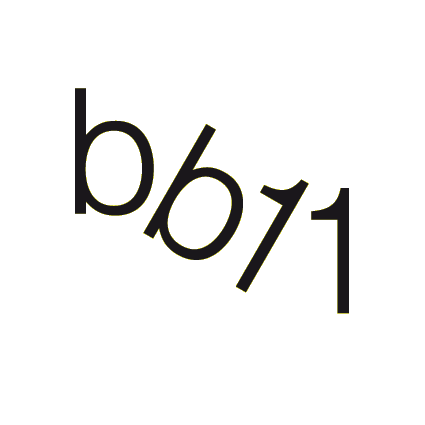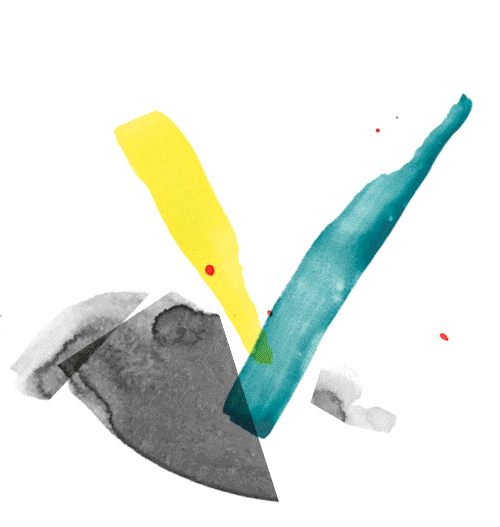

Sign up for our newsletters. You can change the settings or unsubscribe at any time.
Thank you for your subscription. We have sent you an e-mail with a confirmation link.


exp. 1
exp. 2
exp. 3

Kiri Dalena
Venues: KW Institute for Contemporary Art, 11th Berlin Biennale c/o ExRotaprint
Kiri Dalena
Born 1975 in Manila, PH – lives and works in Manila
Kiri Dalena’s socially engaged practice took a significant turn at the beginning of 2012 with Tungkung Langit, a video work shot while accompanying relief efforts after a devastating hurricane hit a remote village in Iligan, Philippines. With the community’s encouragement, she found herself documenting two survivors, both young children—siblings who had lost their family in the tragedy and were left to cope on their own. Realizing the fragility and vulnerability of her subjects, Dalena found herself reevaluating the filming process to find a more compassionate form of taking part in telling their stories, and she began to join the children in drawing and making art.
In her most recent work, Alunsina (2020), Dalena continues to explore both the possibilities and limits of engagement within a community that is facing trauma. Working closely with human rights organizations, she finds herself documenting the struggles of children and families in an urban settlement severely impacted by the government’s declaration of war on drugs—an ideology that has led to thousands of extrajudicial killings of suspected drug users, and has orphaned hundreds of children. Here, she engages with another family whose child has resorted to drawing pictures to cope with the tragedy, and again confronts the complexities in communicating the violence they have witnessed. Through her accounts of the people’s struggles and the children whose lives are affected, Dalena’s practice continues to expand our notions of artistic production to include a nurturing hand, helping members of the community to find their own expression—particularly the child as subject—and obligating us to turn our attention to their voices and powers of imagination, while in the process, uncovering pain that is both unspeakable and unimaginable.
Cocoy Lumbao
Freiheit für Chile!
Anonymous
Photo album
Género y colonialidad en busca de claves de lectura y de un vocabulario estratégico descolonial
Rita Segato
Essay
A World Without Bones
Agustín Pérez Rubio
Expresiones de la locura: el arte de los enfermos mentales
Hans Prinzhorn
Monograph
St Sara Kali George
Delaine Le Bas
Soundscape
Weaving Solidarity
Renata Cervetto and Duygu Örs
Q&A
By using this website you agree to the use of cookies in accordance with our data privacy policy.

Kiri Dalena
Venues: KW Institute for Contemporary Art, 11th Berlin Biennale c/o ExRotaprint
Kiri Dalena
Born 1975 in Manila, PH – lives and works in Manila
Kiri Dalena’s socially engaged practice took a significant turn at the beginning of 2012 with Tungkung Langit, a video work shot while accompanying relief efforts after a devastating hurricane hit a remote village in Iligan, Philippines. With the community’s encouragement, she found herself documenting two survivors, both young children—siblings who had lost their family in the tragedy and were left to cope on their own. Realizing the fragility and vulnerability of her subjects, Dalena found herself reevaluating the filming process to find a more compassionate form of taking part in telling their stories, and she began to join the children in drawing and making art.
In her most recent work, Alunsina (2020), Dalena continues to explore both the possibilities and limits of engagement within a community that is facing trauma. Working closely with human rights organizations, she finds herself documenting the struggles of children and families in an urban settlement severely impacted by the government’s declaration of war on drugs—an ideology that has led to thousands of extrajudicial killings of suspected drug users, and has orphaned hundreds of children. Here, she engages with another family whose child has resorted to drawing pictures to cope with the tragedy, and again confronts the complexities in communicating the violence they have witnessed. Through her accounts of the people’s struggles and the children whose lives are affected, Dalena’s practice continues to expand our notions of artistic production to include a nurturing hand, helping members of the community to find their own expression—particularly the child as subject—and obligating us to turn our attention to their voices and powers of imagination, while in the process, uncovering pain that is both unspeakable and unimaginable.
Cocoy Lumbao
Grupo Experimental de Cine en acción
Gabriel Peluffo
Drawing
Fragments of the Artist’s Diary, Berlin 11.2019–1.2020
Virginia de Medeiros
Diary
Touching Feeling. Affect, Pedagogy, Performativity
Eve Kosofsky Sedgwick
Monograph
New Look
Flávio de Carvalho
Performance
Museo de la Solidaridad Salvador Allende (MSSA) in Berlin
A conversation between María Berríos and Melanie Roumiguière
Conversation
Being in Crisis together – Einander in Krisen begegnen
Feminist Health Care Research Group (Inga Zimprich/Julia Bonn)
Online workshop
By using this website you agree to the use of cookies in accordance with our data privacy policy.

Kiri Dalena
Venues: KW Institute for Contemporary Art, 11th Berlin Biennale c/o ExRotaprint
Kiri Dalena
Born 1975 in Manila, PH – lives and works in Manila
Kiri Dalena’s socially engaged practice took a significant turn at the beginning of 2012 with Tungkung Langit, a video work shot while accompanying relief efforts after a devastating hurricane hit a remote village in Iligan, Philippines. With the community’s encouragement, she found herself documenting two survivors, both young children—siblings who had lost their family in the tragedy and were left to cope on their own. Realizing the fragility and vulnerability of her subjects, Dalena found herself reevaluating the filming process to find a more compassionate form of taking part in telling their stories, and she began to join the children in drawing and making art.
In her most recent work, Alunsina (2020), Dalena continues to explore both the possibilities and limits of engagement within a community that is facing trauma. Working closely with human rights organizations, she finds herself documenting the struggles of children and families in an urban settlement severely impacted by the government’s declaration of war on drugs—an ideology that has led to thousands of extrajudicial killings of suspected drug users, and has orphaned hundreds of children. Here, she engages with another family whose child has resorted to drawing pictures to cope with the tragedy, and again confronts the complexities in communicating the violence they have witnessed. Through her accounts of the people’s struggles and the children whose lives are affected, Dalena’s practice continues to expand our notions of artistic production to include a nurturing hand, helping members of the community to find their own expression—particularly the child as subject—and obligating us to turn our attention to their voices and powers of imagination, while in the process, uncovering pain that is both unspeakable and unimaginable.
Cocoy Lumbao
By using this website you agree to the use of cookies in accordance with our data privacy policy.

Kiri Dalena
Venues: KW Institute for Contemporary Art, 11th Berlin Biennale c/o ExRotaprint
Kiri Dalena
Born 1975 in Manila, PH – lives and works in Manila
Kiri Dalena’s socially engaged practice took a significant turn at the beginning of 2012 with Tungkung Langit, a video work shot while accompanying relief efforts after a devastating hurricane hit a remote village in Iligan, Philippines. With the community’s encouragement, she found herself documenting two survivors, both young children—siblings who had lost their family in the tragedy and were left to cope on their own. Realizing the fragility and vulnerability of her subjects, Dalena found herself reevaluating the filming process to find a more compassionate form of taking part in telling their stories, and she began to join the children in drawing and making art.
In her most recent work, Alunsina (2020), Dalena continues to explore both the possibilities and limits of engagement within a community that is facing trauma. Working closely with human rights organizations, she finds herself documenting the struggles of children and families in an urban settlement severely impacted by the government’s declaration of war on drugs—an ideology that has led to thousands of extrajudicial killings of suspected drug users, and has orphaned hundreds of children. Here, she engages with another family whose child has resorted to drawing pictures to cope with the tragedy, and again confronts the complexities in communicating the violence they have witnessed. Through her accounts of the people’s struggles and the children whose lives are affected, Dalena’s practice continues to expand our notions of artistic production to include a nurturing hand, helping members of the community to find their own expression—particularly the child as subject—and obligating us to turn our attention to their voices and powers of imagination, while in the process, uncovering pain that is both unspeakable and unimaginable.
Cocoy Lumbao
St Sara Kali George
Delaine Le Bas
Soundscape
I: Junto a las curadoras de la XI Berlin Biennale for Contemporary Art
Renata Cervetto, Lisette Lagnado
Conversation
Teatro da Vertigem
Monograph
Touching Feeling. Affect, Pedagogy, Performativity
Eve Kosofsky Sedgwick
Monograph
Hatred Among Us
Lisette Lagnado
Essay
„Klaus Eckschen: Hörspiel“
Die Remise
Hörspiel
By using this website you agree to the use of cookies in accordance with our data privacy policy.
By using this website you agree to the use of cookies in accordance with our data privacy policy.




